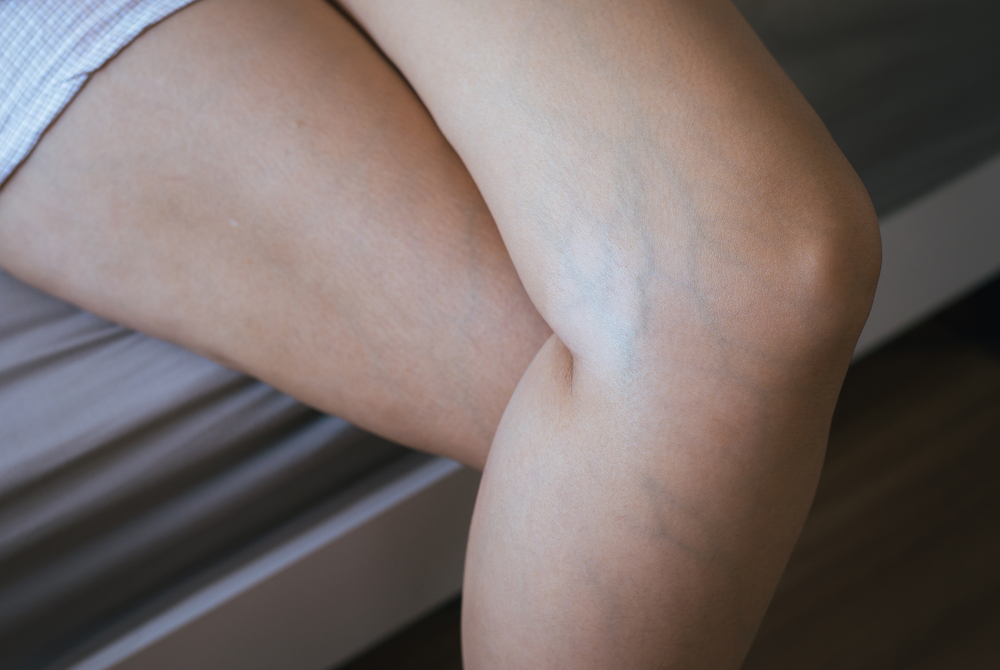If you have ever seen small, red, blue, or purple veins just under the surface of the skin, chances are you are looking at spider veins. These small vessels are found close to the surface of the skin and are most commonly seen on the legs, arms, and face. Although they are usually harmless, these veins can be a cosmetic concern for many people. At Mimi Lee, MD in Little Rock, AR, we offer sclerotherapy to treat problematic veins.
Will Sclerotherapy Get Rid of Spider Veins?
If you’re looking for an effective and minimally invasive treatment to get rid of spider veins, sclerotherapy is a fantastic option to consider. The treatment involves injecting a solution into the vein, which causes the vein to collapse. Over time, the treated veins will fade away, leaving behind healthy, normal-looking skin.
The Sclerotherapy treatment process is relatively quick, taking only about 30-45 minutes to complete. It is also relatively painless, as the needles used are very thin. Most patients report only minimal discomfort during treatment.
How Long Does the Treatment Last?
Once the veins have been treated, they will not reappear. However, new spider veins can develop over time, and additional treatments may be necessary to maintain results. For best results, it is essential to follow all of your physician’s instructions, including wearing compression stockings as directed. With proper care, this treatment can give you permanent results and help you feel more confident about your appearance.
Consultation
When you come in for your consultation, the first thing we will do is assess the extent of your condition. We will take a look at the affected areas and discuss your medical history with you. We will also ask you about any medications you are taking as well as any allergies you have.
Once we have a clear understanding of your condition, we will develop a treatment plan that is tailored to your needs. If you decide to proceed with treatment, we will schedule a series of treatments and provide you with instructions on how to care for your skin before and after each treatment.
Post-Treatment Care
Wear Compression Garment
Most patients have no trouble wearing compression garments after treatment, and there are several good reasons to do so. First, compression helps to minimize swelling and bruising by applying gentle pressure to the treated area. This can help the injected solution to work more effectively and speed up the healing process. Second, compression garments help to prevent blood clots from forming in the treated veins.
Finally, compression garments help to ensure that the treated veins collapse correctly. This helps to improve results and reduces the risk of recurrence. Overall, wearing a compression garment after treatment is a simple way to see quick results and promote healing.
Get Back to Normal Activity
We recommend our patients to get back to their normal activities as soon as possible after treatment. This is because physical activity helps to promote circulation, which can speed up the healing process. In addition, staying active can help to prevent new veins from forming. And finally, returning to your normal routine can help to boost your mood and improve your overall sense of well-being.
Avoid Heavy Lifting
Heavy lifting can put strain on the treated vein, which can lead to the formation of blood clots. Additionally, heavy lifting can also cause the treated vein to become more visible as well as increase the risk of bruising. Lifting heavy objects can also interfere with the healing process, and may even lead to the development of scar tissue. For these reasons, it is best to avoid heavy lifting for at least three days after treatment.
Avoid Lengthy Squatting
There are a few good reasons why you should avoid squatting for long periods of time if you’ve been treated in the legs. First, squatting can cause the vein to reopen. When you squat, your muscles put pressure on the vein, which can cause it to reopen. This defeats the purpose of the treatment and may even worsen your condition.
Secondly, squatting puts additional pressure on blood vessels, which can increase the risk of bruising after treatment. Additionally, if you have any open wounds or lesions near the treated area, squatting may increase your risk of infection.
Stay Away From Hot Baths or Sauna
The heat from a hot bath or sauna can cause the veins to dilate, which negates the effects of the treatment. In addition, it can also lead to discomfort and increase your risk of developing blood clots.
Don’t Elevate Your Legs Too High
It’s crucial to keep your legs at or below the level of your heart in order to avoid potential complications. The treated area still needs a steady supply of blood in order to heal properly. When you elevate your legs, the blood flow slows down and can actually impede the healing process. Additionally, you may be more likely to develop blood clots by elevating your legs.
Start Your Journey to Better Vein Health Today
At Mimi Lee, MD, we understand that dealing with vein issues can be a major source of stress and anxiety. That’s why we offer sclerotherapy to help our patients achieve better vein health. Contact Mimi Lee, MD in Little Rock, AR, today to find out if this treatment is right for you.
